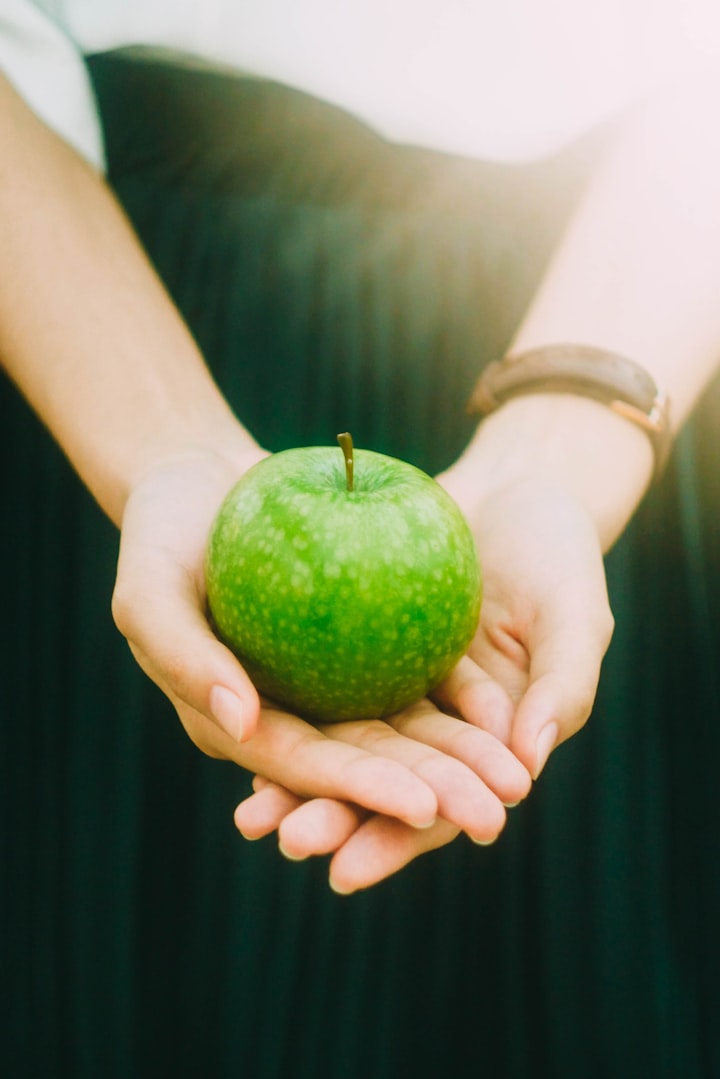You Don't Need to Count Calories: Just Use Your Hands
A much better way to determine portion sizes

I hope that all forms of calorie counting fade away faster than my love life.
Not only is it time-consuming, but calorie counting may be quite inaccurate. Instead, you have a good measuring tool attached to you - two of them, actually.
Your hand can serve as a decent way to determine portions sizes as the size of your hand correlates pretty well to your body size. Over the years, portions sizes have grown out of control, but your hand stays the same.
I've spent over 20 years as a personal trainer and nutritionist, and have found this to be a much more helpful guide to help people determine the right portion sizes.
This is far from a perfect science - but so is calorie counting. Let's take a look into this.
The Calorie Myth
There is a lot more information now about the inaccuracy of calorie counting. First off, it's hard to know exactly how many calories you're actually consuming. Most calorie counts come from the manufacturers, and they're not always that accurate.
In fact, the FDA allows for a 20% margin of error. That's a pretty big margin if you're trying to eat a specific target. If you aim to get 3,000 calories a day, you may be overeating by 600 calories a day - or under-eating that much.
But what is a calorie? Technically, a calorie is a kilocalorie and one of them is what's needed to heat one liter of water by one degree Celsius.
But how is this determined? They use a machine called a calorimeter.
This machine measures the heat of incinerated food that's surrounded by a water bath. A portion of food is mixed with water in a food processor to make a puree. The puree is then freeze-dried and ground into a powder in order to be ignited.
The incineration of the powder reveals the heat capacity of a food by measuring the temperature changes in the surrounding water. The temperature change of the water determines the caloric content of that specific food.
It gets a bit more complicated than this, but that's a quick overview. The problem is our bodies don't incinerate food; they digest it.
How Much Are We Really Eating?
The other problem - besides not knowing really how many calories are in the food you eat - is not knowing exactly how many calories your body uses.
There are different formulas, but these are still calculations - and there are many variables that can have an impact on them.
Again, our bodies aren't calculators: they are biological organisms.
Calorie counting may be beneficial for someone in the final preparation of a physique contest, but the average person isn't doing this. It can also be handy to count calories for a few days, just to get a ballpark idea of how many you roughly consume.
Many people have no idea how much - or little - they are taking in. It's not that calories don't matter, but if you want to use a more accurate way, using your hand to measure portions sizes may be more practical - and easier.
One place that recommends this is the Iowa Department of Public Health, but many in the nutrition world including Precision Nutrition, and even the European Food Information Council have got on board with it, too.
A Better Way to Measure Your Food?
Here's a rough breakdown of how to use your hand size to determine a better portion for your body. If you're a big person, you most likely have big hands, and using them seems to be a more realistic representation of your body than following a calculation.
Here's the basic breakdown of how to use your hand for portion sizes:
The palm of your hand: This is for a serving of protein. The size, and width of your palm, equals around 3 oz, and that a good measurement for a serving of chicken, fish, beef, etc.
Fist: Your fist works well to determine your portion of veggies.
Cupped hand: This is a good measurement for your carb portions. It may also work well for a serving of fruit or dairy if you consume that.
Your thumb: This is a good measurement for fat portions such as oils, nut butters, nuts and seeds.
Diet changes need to be discussed with your doctor, and we should look at this as just a starting point. But generally, men may want to have two palms of protein, two fists of vegetables, two cupped hands of healthy carbs, and two thumbs of a healthy fat at each meal.
Women may want to have one palm of protein, one fist of veggies, one cup of healthy carbs, and one thumb of healthy fats at each meal.
As usual, this is just a starting point, and adjustments would need to be made depending on your goals.
Final Thoughts
I personally spent years counting calories while training in the gym, and it was miserable.
After learning how inaccurate calorie counts might be, I much prefer to use methods like this. And again, who wants to spend all their time measuring and counting something that's not even accurate to begin with?
The most important thing is to find what works best for you. These days, I like to keep things simple as opposed to stressing myself out.
About the Creator
James Logie
Personal trainer, nutrionist, traveler, blogger, podcaster, lover of the 80s.






Comments
There are no comments for this story
Be the first to respond and start the conversation.